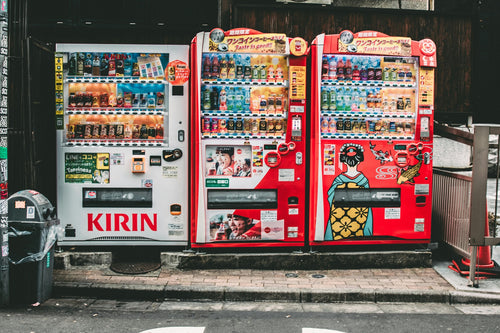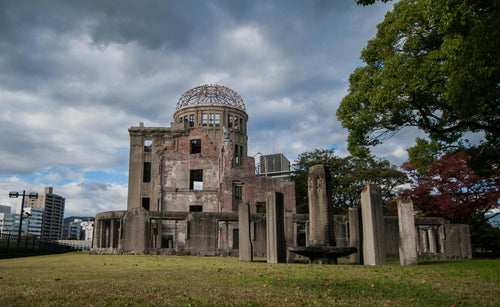
Guide to Rail Travel in Japan
Japan’s extensive rail network is one of the most efficient, punctual, and convenient ways to explore the country. With world-famous bullet trains (shinkansen), scenic local routes, and various rail passes designed specifically for tourists, traveling by rail allows visitors to access cities, towns, and remote regions with ease. This guide will cover everything you need to know about rail travel in Japan, from navigating different train types and ticketing systems to must-have rail passes and tips for a smooth journey.
1. Overview of Japan's Rail Network
Japan’s rail network is expansive, connecting all major cities and regions across the country. Operated by Japan Railways (JR) and several private rail companies, the system is known for its reliability and punctuality. High-speed shinkansen trains link major cities, while local trains provide access to smaller towns and rural areas. For tourists, Japan’s rail network makes exploring the country convenient, safe, and efficient, with options ranging from rapid express trains to scenic regional lines.
2. Types of Trains
Japan’s rail system offers several types of trains, each suited to different travel needs:
Shinkansen (Bullet Trains)
The high-speed shinkansen network connects cities from Hokkaido to Kyushu. Known for speeds of up to 320 km/h, shinkansen trains are the fastest way to travel long distances. Popular routes include the Tokaido Shinkansen, which links Tokyo, Kyoto, and Osaka.
Limited Express Trains
Limited Express trains provide rapid service between major cities and regions, offering fewer stops than local trains. They are ideal for mid-range journeys where shinkansen are not available.
Rapid and Local Trains
Rapid trains skip some stations and cover distances faster than local trains, which stop at every station. Both types serve urban and suburban areas, with local trains reaching rural stations, making them ideal for exploring smaller towns.
3. Rail Passes for Tourists
Several rail passes offer unlimited travel within specific regions or on select JR lines. These passes are exclusive to international visitors and provide excellent savings:
Japan Rail Pass
The Japan Rail Pass offers unlimited travel on all JR lines nationwide, including most shinkansen routes. Available in 7, 14, and 21-day options, this pass is ideal for travelers covering multiple regions.
Regional Rail Passes
For those exploring specific areas, JR offers regional passes, such as the JR Kansai Pass and JR Hokkaido Pass. These passes are cost-effective for travel within one region, especially for short trips.
Other Passes
Some private rail companies, like Odakyu and Tobu, offer passes covering routes and attractions around Tokyo and other cities, providing flexibility at lower costs.
4. Ticketing and IC Cards
Understanding Japan’s ticketing system ensures a hassle-free travel experience. Options include single tickets, IC cards, and reserved seating:
Single Tickets
Single tickets can be purchased at ticket machines or counters. While convenient for short journeys, they may not be cost-effective for extended travel.
IC Cards
IC cards like Suica and Pasmo are rechargeable smart cards that allow cashless travel on trains, buses, and even some shops. These cards simplify transfers and are compatible across most of Japan.
Reserved and Non-Reserved Seating
Shinkansen and Limited Express trains offer both reserved and non-reserved seats. Reserved seating, which can be booked at ticket counters or online, guarantees a seat, especially on popular routes during peak times.
5. Navigating Train Stations
Japanese train stations, particularly in major cities, can be large and complex, featuring multiple entrances, exits, and shopping areas. Signage in English is common, and station staff are generally helpful:
Best for: Travelers who prefer efficient and organized transit hubs for easy navigation.
6. Train Etiquette
Respectful behavior on trains contributes to a smooth travel experience for everyone. Here are some key etiquette guidelines:
- Keep noise levels low and avoid phone conversations.
- Offer seats to the elderly, disabled, and those with small children.
- Refrain from eating on local and rapid trains. Eating is acceptable on long-distance shinkansen and Limited Express routes.
7. Popular Rail Routes and Scenic Journeys
Japan’s railways offer scenic journeys that showcase the country’s diverse landscapes and seasonal beauty:
Tokaido Shinkansen (Tokyo to Osaka)
This iconic route connects Tokyo, Nagoya, Kyoto, and Osaka. The journey offers views of Mount Fuji on clear days, blending city and nature along the way.
Hida Limited Express (Nagoya to Takayama)
The Hida route travels through the Japanese Alps, with stunning views of rivers, mountains, and rural villages. This scenic journey is especially beautiful in spring and autumn.
Resort Shirakami (Akita to Aomori)
This sightseeing train travels along the rugged coastline of northern Japan, with views of the Sea of Japan and lush forests. It’s popular among nature enthusiasts and photographers.
8. Tips for Smooth Rail Travel
Here are a few tips to enhance your rail travel experience in Japan:
- Plan ahead, especially if traveling during peak seasons when seats may fill up quickly.
- Store luggage securely to avoid blocking aisles, particularly on crowded trains.
- Download travel apps like Hyperdia or Japan Transit Planner for real-time scheduling information.
Conclusion
Traveling by rail in Japan is a fantastic way to explore the country’s urban centers, scenic landscapes, and remote areas. With a variety of train types, convenient ticketing options, and region-specific rail passes, Japan’s rail system accommodates all types of travelers. Armed with this guide, you’re ready to navigate the intricacies of Japanese rail travel and make the most of your journey through this beautiful and fascinating country. Happy travels!
分享
You may also like
-

日本自動販賣機提供的 10 種獨特飲品值得嘗試
日本以其自動販賣機而聞名,提供種類繁多的飲料,而不僅僅是軟性飲料和瓶裝水。從獨特的口味到創新的飲料,日本的自動販賣機為遊客和當地人帶來了許多驚喜。本指南探討了 10 種只能在日本自動販賣機中找到的獨特飲料,每種飲料都有其獨特的風味、文...
-

日本獨特的建築:8 大傳統與現代地標
日本以其古代建築遺產和尖端現代設計的獨特融合而聞名。從數百年歷史的寺廟和城堡到當代的摩天大樓和創新的公共空間,日本建築體現了該國對傳統和前瞻性創造力的深刻尊重。本指南探索了日本八個最具標誌性的建築地標,提供了傳統和現代風格的旅程,展示...
-

東京十大值得參觀的博物館
東京擁有各種各樣的博物館,可以滿足從藝術和歷史到技術和流行文化的各種興趣。無論您是有興趣探索日本傳統藝術還是體驗最新的數位創新,東京的博物館都能提供吸引各個年齡層遊客的身臨其境的體驗。每個博物館都提供了對日本文化和全球藝術場景不同方面...
-

聯合國教科文組織世界遺產日本旅遊指南
日本擁有許多聯合國教科文組織世界遺產,每個組織都可以讓您一窺該國豐富的文化遺產和自然美景。這些遺址,從古老的寺廟、歷史悠久的城堡到風景優美的風景,體現了日本的歷史意義和對大自然的敬畏。參觀這些遺址不僅可以讓遊客欣賞日本的建築和精神歷史...
目前沒有相關文章。




